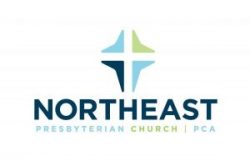Worship is a way of life that takes place not just at 11:00 on Sunday morning, but every other hour of the week (John 4:20-24). Through this “Call to Worship,” we want to share some thoughts about worship, scripture verses, hymns, and songs to teach and encourage you as you seek His face daily and then hopefully together with us on Sunday!
Maria Currey, Assistant Director of Music – Traditional
Hymn Highlight – “Savior, Like a Shepherd Lead Us”
attributed to Dorothy A. Thrupp and William B. Bradbury
“Savior, Like a Shepherd Lead Us” first appeared in a children’s hymnal compiled by Dorothy Thrupp in 1836, so some people think that she wrote it—but that is far from certain.
But it is clear enough what inspired the words. Two scriptures come to mind. The first is Psalm 23, which begins, “The Lord is my shepherd, I shall not want.” The second is the tenth chapter of the Gospel of John, where Jesus says, “I am the good shepherd.”
We know William Bradbury wrote the music. Bradbury was a gifted teenage music student in Boston when he met Lowell Mason at the Bowdoin Street Church. Mason was a well-known musician who wrote the music for “Joy to the World” and a number of other hymns. Mason took Bradbury under his wing, nurturing his musical abilities. After finishing school, Bradbury moved to New York City, where he worked as a church musician specializing in children’s music. He wrote the music for what must be the favorite children’s hymn of all time— “Jesus Loves Me.” He intended “Savior Like a Shepherd Lead Us” to be a children’s hymn, but it turned out that adults enjoyed singing it too.
A story related to this hymn is told about Ira Stankey, a musician who worked closely with Dwight L. Moody. On one occasion, Stankey sang this song, “Savior, Like a Shepherd Lead Us” at a public gathering. Afterwards, one of the guests pulled him aside and asked if Stankey had served on guard duty on a particular night in a particular place. Stankey, who had served in the Union army, said that he had. The other man said that he had served in the Confederate army. On the evening in question, he had started to shoot a Union soldier when the Union soldier began to sing “Savior, Like a Shepherd Lead Me.” The Confederate soldier, who had often heard his mother sing that song, couldn’t do it. Stankey was the Union soldier that was spared. Singing “Savior, Like a Shepherd Lead Us” had saved Stankey’s life. The song of a mother’s heart sung into a soldier’s mind spared his soul on the battlefield, like the Word of our Good Father, ready for our child-hearts when adversity strikes!
Copyright 2007, Richard Niell Donovan, adapted by Maria Currey
Kerri Roberts, Assistant Director of Music – Contemporary
This Mother’s Day we will sing together the widely popular worship song, “What a Beautiful Name” for the first time in our Contemporary Worship service. The very encouraging story behind the song will help give us deeper insight into the songwriters’ hearts and the meaning of the lyrics. From Hillsong Worship:
What hides in the name of Jesus?
The name of Jesus encompasses more than we can hope or imagine—more beauty, more wonder, more power. Most of the song “What A Beautiful Name” was penned in a glorified cubicle in the suburbs of Sydney over a few days in December 2015. From there we spent months crafting the lyrics to riff on our core scriptures — Hebrews 1:1-4 and Colossians 1:15-20, 26-27 — yet be simple enough to make sense on a first reading. Hebrews 1:1-4 expresses with clarity and conciseness the supremacy of Jesus Christ — the radiance of God’s glory, the exact expression of His being, the creative conduit of His power. Jesus is God’s Word: powerful, authoritative and utterly supreme. He is the wonder of salvation, who reconciled us to God.
“In the past God spoke to our ancestors through the prophets at many times and in various ways, but in these last days he has spoken to us by his Son” (Hebrews 1:1-2, NIV)
To know God and to worship Him (“to enjoy Him forever”) is the most fundamental reason for our existence. As Jesus reveals the great mysteries of God, we come to know more of who God is, glimpsing new facets of His beauty, wonder and power.
“Beauty” evokes the tenderness of His love and the sweetness of His presence. “Wonder” speaks to our gratitude for salvation, awe at the lengths of His sacrifice. “Power” affirms His supremacy and Sovereignty—an exhortation to remember our access to the power of God in every situation, as we call upon and declare the Name of Jesus.
What a beautiful Name it is
What a wonderful Name it is
What a powerful Name it is
The Name of Jesus
Jesus has the Name above all others. Anything that we can name – from our greatest triumphs to our greatest challenges—comes under the authority of His Name. This song confesses that no greater beauty or source of wonder exists outside of Jesus, “the radiance of God’s glory” (Hebrews 1:3). The song is also a statement that Jesus has no rival or equal. His power is unmatched and absolute.
Perhaps some of us understand God loves us through the death and resurrection of Jesus, but haven’t grasped His power, ability and will to move strongly in our present circumstances. Or perhaps, we understand God as the supreme, omnipotent Deity He is, but have never known Him close and tender, as a friend acquainted with the depths of our humanity, knowing our flaws cannot perturb His love. Our prayer for this song is that we can all enter into a deeper, more lateral, revelation of the person of Jesus Christ—the epitome of beauty.
Brooke Ligertwood & Ben Fielding
Original Post: http://hillsong.com/collected/blog/2016/10/what-a-beautiful-name-song-story/


